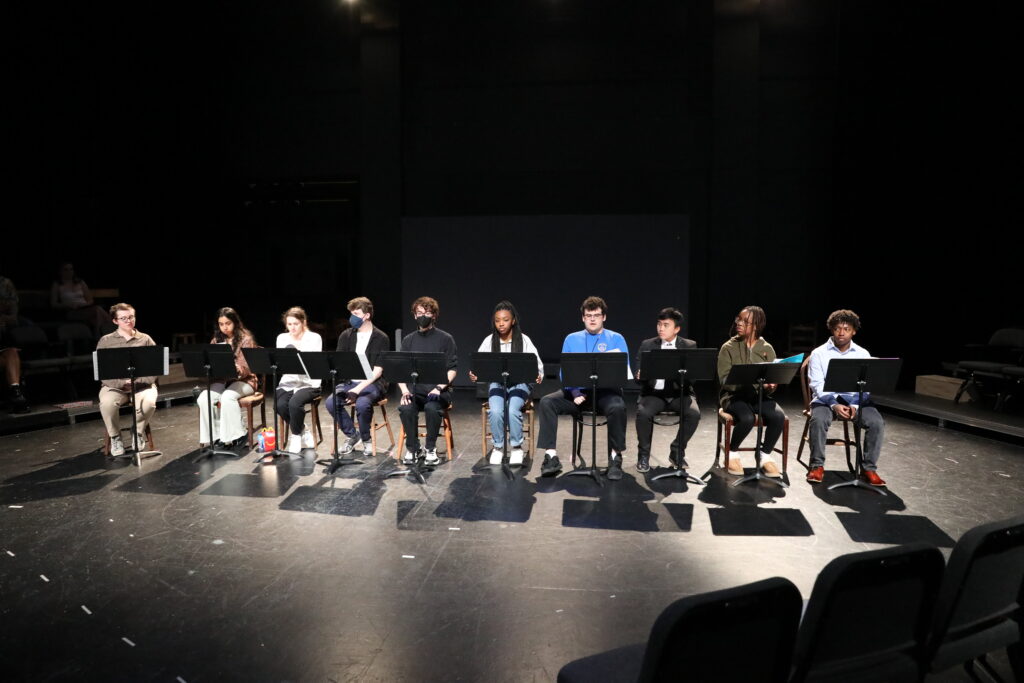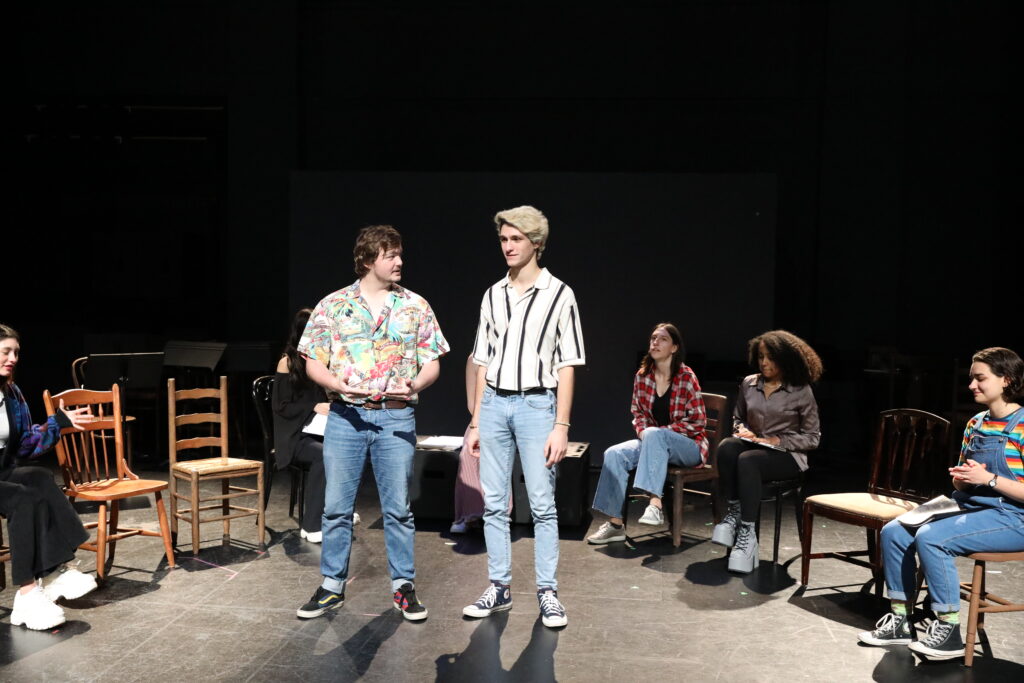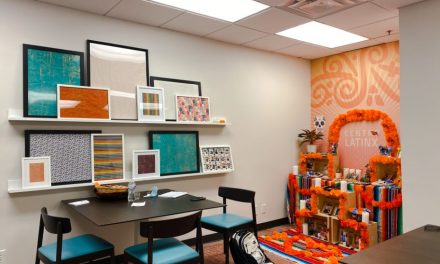When the lights go down in the Theater Lab at the Schwartz Center, small stars light up in clusters on the wall close to the ceiling, lending an otherworldly presence to an otherwise utilitarian room. The glowing decals hint at the possibility of the space to be transformed into a site of exploration, discovery and beauty.
The Lenaia Playwriting Festival showcased nine student plays on Feb. 5 and 6. The works were mostly one-act plays, with the exception of one monologue and an excerpt from a longer play.

Cast and crew from the Sunday matinee performance. Courtesy of Victor Zhou.
Each play was a staged reading, as opposed to a fully-produced play, meaning crew read out stage directions t, actors read their lines from stands and sets and costumes were limited. Two stands of seating pointed at a central space, and a few chairs and music stands comprised the stage. The closeness of the setting, combined with the minimal nature of a staged reading, created an intimacy between the audience and the stage, emphasizing the writing of the plays themselves and drawing the audience into a world that felt close and familiar.
“We are always taught to appreciate these as plays in progress,” Lenaia Producer Anna Bayuk (24C) said. “And so, to get to be a part of the process of making the work what it is, is something that we’re really proud of getting to do as a festival.”
The planning committee, which secures a venue and decides which plays to put on during Lenaia, started their work during the fall semester. This year, the committee received 35 submissions, the most entries they have ever received, Bayuk said.
The majority of the plays showcased at Lenaia this year were one-act plays, partly because the intermediate playwriting course at Emory culminates in the creation of a one-act play: meaning there is a group of people walking around Emory with one-act plays written. Fortunately, a shorter format allows for the festival to put on more plays.
“We want to showcase as many voices as possible because we’re really all about uplifting student voices and uplifting student art and giving a platform to folks who may not otherwise have their plays staged,” Bayuk said.
A look at Lenaia’s Instagram page reveals the short biographies of all the playwrights, many of whom are studying multiple subjects across STEM and the humanities. Some have written and staged plays before—a few have had plays in previous years of Lenaia—but, for others, this is the first play they have ever written or been able to exhibit.
“We try to get as many different walks of life and perspectives as we can,” Bayuk said. “We don’t just want a bunch of theater majors because I would call it a pretty interdisciplinary festival, and we try really hard to reach across the Emory population for that.”
Throughout the festival, distinct themes such as loss, womanhood and trauma certainly emerged, but each piece approached these themes in a unique way. Nivi Nimmagadda’s (23C) “THE BECHDEL TEST” explored a woman’s identity and relationship to her mother through the various voices of famous men throughout history and fiction.

Cast of Nimmagada’s “THE BECHDEL TEST.” Courtesy of Victor Zhou.
Nimmagadda was initially skeptical about submitting her play to Lenaia, but one of her friends, who was involved with the festival, mentioned how many people on the planning committee loved her play.
“This is a story people can relate to … and it was like if you can help even just one person or if you can make any one person feel any sort of emotion, that in itself is enough, and that really stuck with me,” Nimmagadda said in a February interview on the Clifton Culture podcast. “The fact that my play can do that got me really excited about Lenaia and working with the actors and the director.”
Nimmagadda’s play was followed by “gold dust woman,” written by Hailey Sipes (24C), which focused on similar themes, but in the context of the Trojan War as imagined in 1970s California. When juxtaposed, these two works were able to build off of and complicate each other while remaining individual in their perspective.
“We also do our best to pick shows that are interesting in conversation with each other,” Bayuk said. “Sometimes we have pieces that tend to have similar themes and we don’t want to put two shows next to each other that are going on the same emotional journey. We want everyone who goes, even if they just go to one of our performances, to feel like they still got the full Lenaia playwriting festival experience.”

Cast of Sipes’ “gold dust woman.” Courtesy of Victor Zhou.
The sheer variety of plays gave the performances a dynamic scope; comedy coexisted with sadness and fear, each emotion resonating off the other, producing a broad range of feeling and depth. Each piece was thought-provoking and featured rich characters who came to life, thanks to the incredible performances of the many student actors who participated in the festival. In my experience watching, I felt transported and deeply immersed in a different time and space entirely. The final play, “La Papessa: a tale of Catholic confusion,” written by Paula Acocal (23C), felt less like a conclusion and more like an invitation to let the themes of each play in Lenaia echo in the minds of the audience, like a conversation that never really ends.
Bridget Mackie (she/her) (25C) is from Cary, North Carolina and majoring in English. Outside of the Wheel, Bridget likes to make art, knit sweaters and collect plants.







